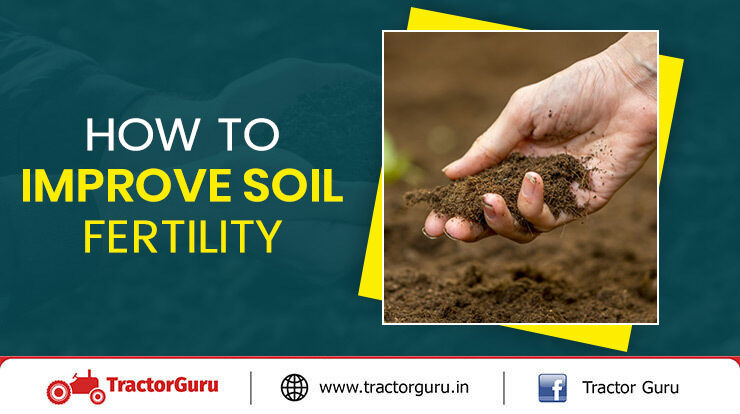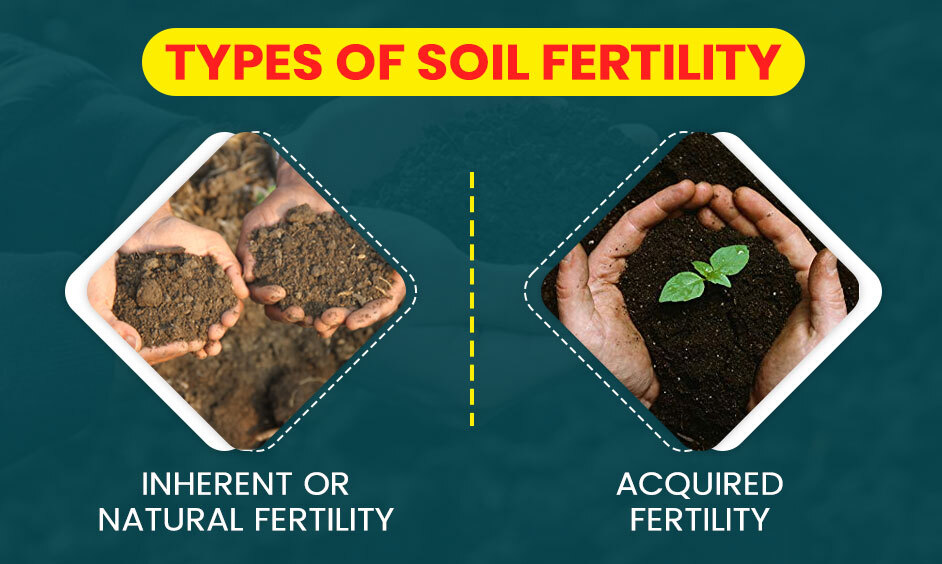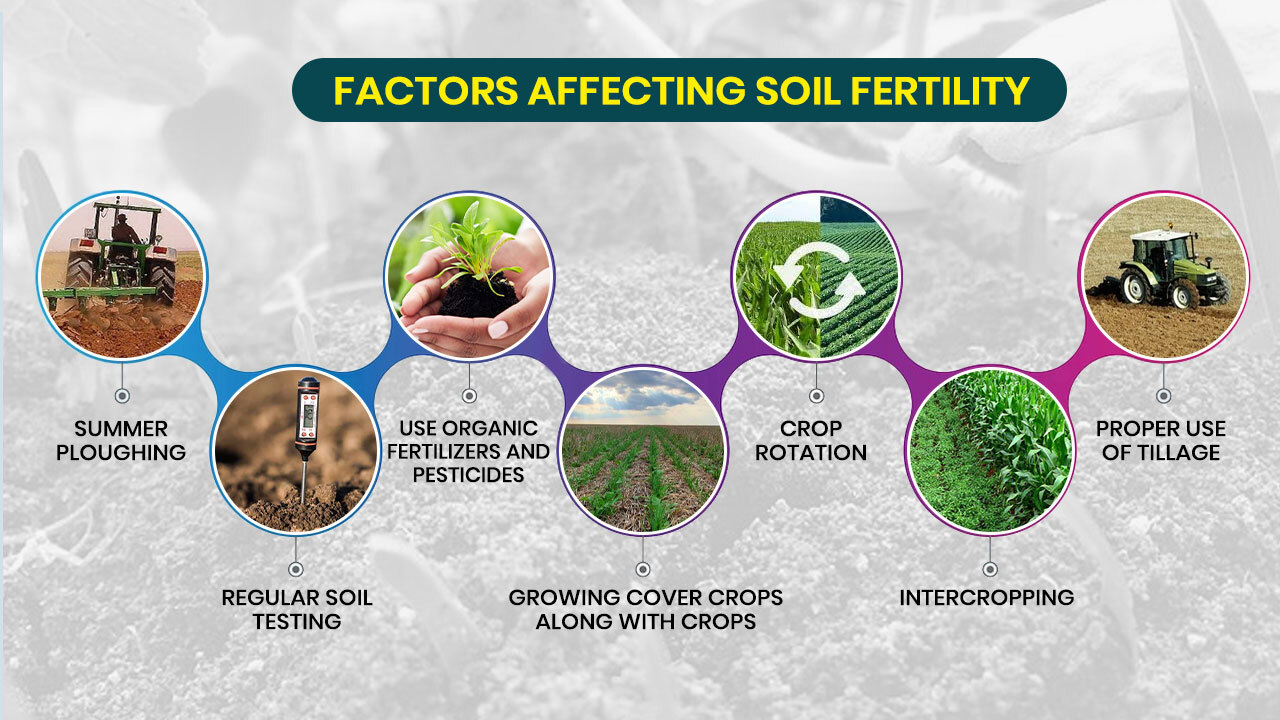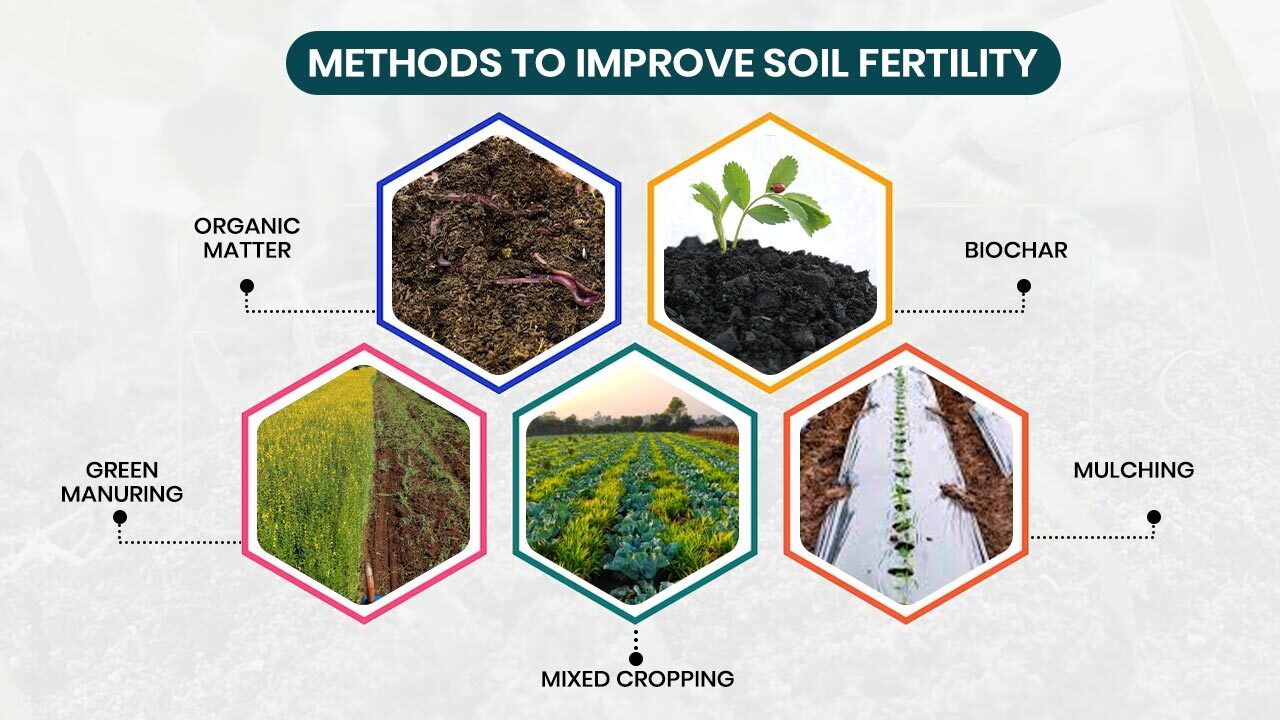How to Improve Soil Fertility – Tips, Methods and Importance

The amount of organic matter in the soil that supports plant growth is known as soil fertility. In general, soil’s inherent ability to give plant nutrients in adequate quantities, proper proportions, and free of hazardous substances.
The above defines soil fertility, and productivity, on the other hand, is the capacity of the soil to generate crops per unit area. Therefore, fertile soil may not be productive, depending on the crops, marketing conditions, and numerous other elements (such as toxic substance presence, poor physical characteristics, or water scarcity).
All productive soils must be fertile, though. Hence, soil fertility generally has a significant impact on soil productivity.
Note- Alluvial Soil is the most fertile soil in India.
Primary Purpose of Soil Fertility
The primary purpose of fertile soil is to produce food, which is crucial in consideration of the FAO’s goal of ending world hunger. Additionally, fertile soil supplies vital nutrients for plant development, producing nutritious food that meets all human health requirements. Fertility also affects economic activity, making it relevant to the economy’s expansion and the struggle against poverty.
An effective management of soil fertility can improve vegetation cover, reduce soil, water, and air pollution and control water resource availability. Fertilizers in the soil, both organic and inorganic, can improve this. In addition, nuclear methods provide information that increases crop yield and soil fertility while having a minimal negative environmental impact.
Note- Soil infertility occurs when a physical or chemical problem interferes with its ability to stimulate healthy plant growth and limits the plant’s access to water and oxygen.
Types of Soil Fertility:

- Inherent or Natural Fertility- The soil in nature contains nutrients referred to as “inherent fertility.” Plants require nitrate, phosphorus, and potassium nutrients for typical crop growth and production. The percentages of nitrogen in Indian soil are between 0.3 and 0.2, phosphorus is 0.03 and 0.3, and potassium is 0.4 and 0.5. Therefore, natural fertility has a limiting factor that prevents Fertility from falling.
- Acquired Fertility- This refers to the fertility produced by using manures and fertilizers, tillage, irrigation, and other methods. In acquired fertility, there is also a limiting factor. The experiment’s findings demonstrate that increasing the amount of fertilizer used has no appreciable impact on yield. Therefore, it is necessary to use fertilizer in accordance with the nutritional composition of the soil, which evaluate by soil testing.
Factors Affecting Soil Fertility

A farmer’s most important job is maintaining the soil’s fertility as healthy soil can result in excellent crop production. Thus, the following are seven essential tips that might help you improve soil fertility.
1. Summer ploughing
Usually done in the summer when the field is empty, ploughing the farms across the slope has many advantages for the soil since it allows for aeration, reduces erosion, and increases the soil’s ability to retain water. Additionally, it destroys the eggs, larvae, and pupae of pests and the fungus growing on the field.
2. Regular Soil Testing
Regular soil testing can educate you on the nutrients lacking in your soil and the crops that will grow best there. In addition, knowing the actual state of your soil will enable you to provide it with the nutrients it needs to keep the balance of nutrients.
3. Use organic fertilizers and pesticides
By replacing inorganic matter with organic matter, you can avoid the negative impacts of artificial pesticides and fertilizers that slowly contaminate and deteriorate your soil.
4. Growing cover crops along with crops
You can maintain the soil’s quality, water, and fertility by growing cover crops with your crops, such as oats. They shield your soil from weeds, erosion, pests, and too much sun exposure as they cover the soil.
5. Crop Rotation
Crop rotation on the same field can promote soil self-sufficiency by preventing the depletion of one set of nutrients and controlling weeds and pests. The crop set is specially created according to season and soil needs, reducing its reliance on external fertilizers, the chance of developing resistant weeds, and improving the soil texture.
6. Intercropping
Growing different crops side by side to support one another and increase output is known as intercropping. You have to select crops carefully to complement one another depending on their size, roots, nutritional needs, and potential pest attacks. You can use it to improve your soil’s yield and organic matter.
7. Proper use of tillage
Improper tillage can reduce yield and degrade the soil. However, when used correctly, it can help reduce erosion, eliminate pests and weeds, and boost your soil’s water-holding capacity. So be cautious while using tillage in your field.
How to Improve Soil Fertility?

Here are some methods of soil fertility evaluation and crop production:
1. Organic matter
- The best method for increasing soil fertility is by adding various organic materials.
- To start, manure must be added to provide nitrogen, a crucial element of fertile soil.
- Farm animal manure, such as that from pigs and cows, is an excellent option in this situation. However, dung from healthy, free-range animals is better to manure from factory-farmed creatures.
- Manure from unhealthy animals contains more pathogens that can infect your crops.
- Thus, you must wait at least 3 months before spreading the animal waste on the garden bed or harvesting your crops, even if it is in good condition. By doing this, contamination can be avoided.
2. Biochar
- Biochar improves soil fertility by acting as a direct nutrient source or changing the soil’s physicochemical properties.
- The nutritional value of biochar is determined by the feedstock used.
- To guarantee low volatilization of vital nutrients, optimal pyrolysis conditions must be used.
- Furthermore, most of the nutrients in biochar have to be in bio-available forms.
- When applied to soil, biochar provides an effective slow-release nitrogen source. However, it does not make sustained assistance to soil fertility.
- When biochar is applied to acidic soils, the pH of the soil rises, increasing agricultural production.
- Additionally, biochar can increase soil CEC and serve as a stable carbon source in the soil, protecting numerous micro- and macronutrients.
- Biochar particle macropores control soil aeration, water infiltration, and water holding capacity (WHC).
- In addition, the overall soil enzyme, which originates from MO, plants, and animals, is also improved by biochar treatment.
3. Green Manuring
- A green manure crop’s main job is to prepare the soil for succeeding plantings.
- Green manures function by absorbing soil nutrients and storing them within their bodies.
- These crops are not harvested and removed from the land because this would deplete the soil’s nutrients, but you can plant them into the soil while still green.
- When plants return to the soil, they gradually decay and deliver these nutrients to the following crop.
- Several soil species and microorganisms use green manure as a food supply constantly.
- For the health of the soil, soil fauna is widespread.
- Their movement and activity contribute to forming a good soil structure, and their feeding on organic matter allows for its distribution in soils.
- Green manuring is a technique that may use on big and small agricultural fields.
4. Mulching
Mulch is a substance spread over the soil’s surface which you can use for several reasons, including-
- Soil moisture conservation.
- Enhancing the soil’s Fertility and health.
- Reducing the weed’s growth.
- Improving the area’s aesthetic attractiveness.
- Mulch is usually, but not always, organic. It may be both temporary and permanent. You can utilize it on bare soil or in plant-surrounded areas.
- Compost or manure mulches will naturally absorbed into the soil by worms and other creatures.
- When carried out correctly, the process can significantly increase soil productivity and is utilized in commercial crop production and gardening.
5. Mixed Cropping
- Sowing various crops in the same area to prevent soil erosion and spreading soil-borne plant diseases is a lesser-known approach to improving soil fertility.
- Additionally, adding nitrate to the soil will help the legumes grow better. Finally, utilize deep-rooted veggies wherever possible to improve soil fertility organically.
These are the five tips that will help you increase your soil fertility.
Note- India has the most fertile soil land in the world.

Importance of Soil Fertility
The remaining nutrients derived from the soil are called soil micronutrients, as they are important for fertility and requires in small amounts. Some soil micronutrients are boron (B), chloride (Cl), copper (Cu), iron (Fe), manganese (Mn), molybdenum (Mo), nickel (Ni) and zinc (Zn). The capability of the soil to deliver plant nutrients is known as soil fertility, which is a crucial component of successful crop production. Fertilizers and soil fertility have a lot in common.
Fertilizer functions as a “SOURCE,” from which we can continuously draw various nutrients and add them to the sink, whilst soil fertility operates as a “SINK” where plants can draw nutrients for optimal output. To meet the need for food and other agricultural raw resources, soil fertility and fertilizer management have recently come to be increasingly understood in all nations.
Here are some points that ensure you that why soil fertility is important.
- Food production has increased, and food shortages have decreased due to intensive fertilizer use and intense cropping with high-yielding varieties.
- However, it has also resulted in several issues with soil fertility and water and soil contamination.
- On the other side, over-exploitation of nutrients has resulted in a widespread deficit of N, P, K, and S, as well as micronutrient deficiencies, particularly Zn and boron, in many soils.
- Deforestation, shifting agriculture, burning of trees, bushes, grasses, and cow dung, soil erosion, soil degradation, nutrient losses, excessive fertilizer use, leaching losses, and other factors have exacerbated soil fertility depletion.
- It is becoming clear that a scientific approach to managing soil fertility and the wise and effective use of fertilizers are key components of India’s agricultural future.
Importance that you must consider
- Problems with soil fertility cannot be resolved by merely giving plants nourishment.
- However, as fertilizer is one of the most expensive inputs, proper management is equally crucial.
- You should make the fertilizer schedule well-balanced to maximize benefits with minimal investment.
- Due to a scarcity of biomass resources, farmers cannot apply enough organic manures in addition to fertilizers.
- As a result of all these factors, soils become deficient and regularly “hungry” for nutrients.
- Therefore, adequate soil and crop management methods, prudent use of fertilizers, and integrated nutrient management practices. It must be applied to increase and maintain good soil fertility and better soil physical condition for sustained crop production.
Lastly, these are the tips and methods you can implement on your farm to improve soil fertility and productivity. For more information, visit TractorGuru.
Related Blogs:



